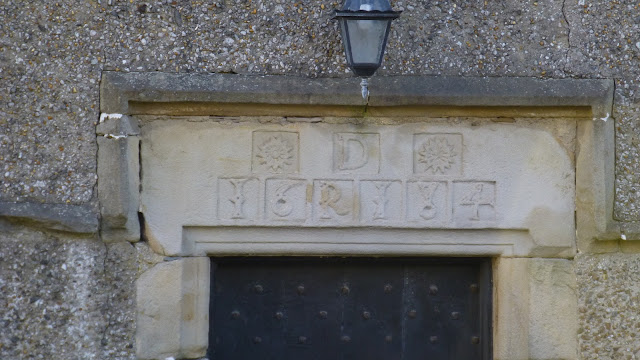In the 17th and early 18th centuries there was a trend across parts of northern England to rebuild houses and farm buildings. Nowhere is this more evident than the villages on the Lancashire-Cumbria border, including Over Kellet in Lonsdale.
Earlier, medieval buildings were generally of poor quality and were showing their age and during the 17th century the economy was performing well. And in the north of England the risk of invasion by the Scots was past, so it was at last worth investing in new buildings. The Restoration in 1660 didn't directly cause more rebuilding but the optimism and stability it brought did accellerate the existing trend.
The Great Rebuilding, as historians have called this phenomenon, was seen in southern England as early as 1570 but northern England (and especially Lancashire and Westmorland) lagged behind.
During this period, the medieval houses of yeomen were either modernised or completely replaced. The timber frames were often given a more up-to-date look by cladding them in stone.
The new buildings were stone-built, like fortresses. Their walls were very thick, usually 3 feet or more, and inside the ceilings were higher than those in the medieval buildings they replaced. As glass had become easier and cheaper to manufacture, windows were larger and the houses were generally light and airy. The medieval hearth, usually in the centre of the floor, was replaced by a modern hearth and chimney against a wall, creating a cleaner domestic environment.
We know the rebuilding dates with such accuracy because of another fashion of the time: datestones, usually placed above a building's front door. The convention was to add three letters which identified the occupants: the family name, plus the christian names of the couple.
Several hundred datestones survive in our local area and they suggest that the most vigorous time for rebuilding here was 1670 to 1700.
How strange to think that the new-build houses which transformed and modernised the medieval village 300 years ago are now the buildings which are protected in a conservation area. I wonder how long the yeoman farmers, showing off their new wealth, expected their houses to last.
Earlier, medieval buildings were generally of poor quality and were showing their age and during the 17th century the economy was performing well. And in the north of England the risk of invasion by the Scots was past, so it was at last worth investing in new buildings. The Restoration in 1660 didn't directly cause more rebuilding but the optimism and stability it brought did accellerate the existing trend.
The Great Rebuilding, as historians have called this phenomenon, was seen in southern England as early as 1570 but northern England (and especially Lancashire and Westmorland) lagged behind.
During this period, the medieval houses of yeomen were either modernised or completely replaced. The timber frames were often given a more up-to-date look by cladding them in stone.
The new buildings were stone-built, like fortresses. Their walls were very thick, usually 3 feet or more, and inside the ceilings were higher than those in the medieval buildings they replaced. As glass had become easier and cheaper to manufacture, windows were larger and the houses were generally light and airy. The medieval hearth, usually in the centre of the floor, was replaced by a modern hearth and chimney against a wall, creating a cleaner domestic environment.
 |
| A good example of a solid house from the time of the Great Rebuilding |
 |
| Datestone from 1684, with the three initials of the original occupants |
 |
| A second example, from 1697 |
How strange to think that the new-build houses which transformed and modernised the medieval village 300 years ago are now the buildings which are protected in a conservation area. I wonder how long the yeoman farmers, showing off their new wealth, expected their houses to last.